- Joined
- Jul 11, 2008
- Messages
- 5,769
- Points
- 48
Putin's best Toys R Us store!
Today we are going to visit the Academy of the Strategic Missile Troops of the Russian Federation located in Balabanovo-1, the Kaluga Region.
Advertisement:
<center>
</center>
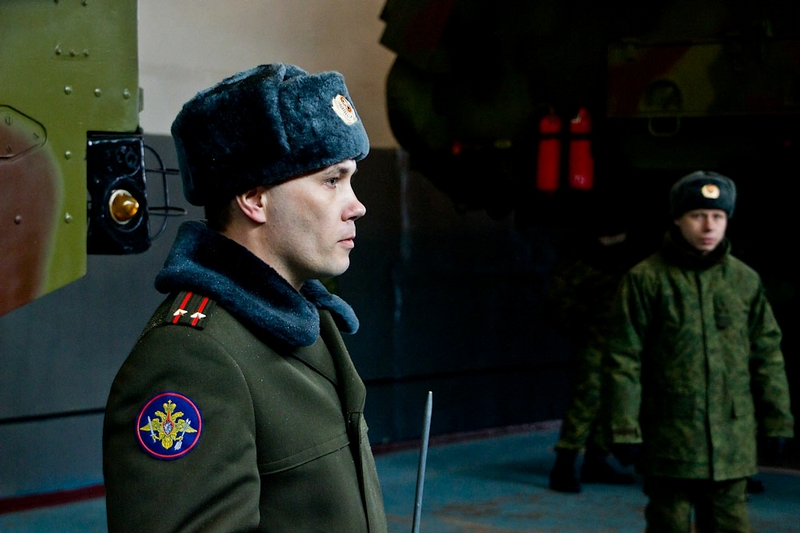
Reporters and bloggers were shown a mobile intercontinental ballistic missile RS-12M Topol.
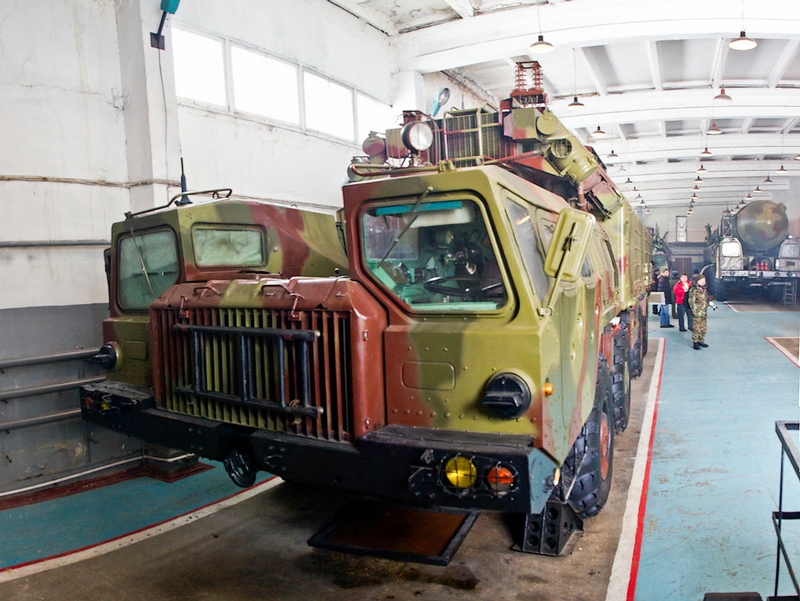
In the hangar.

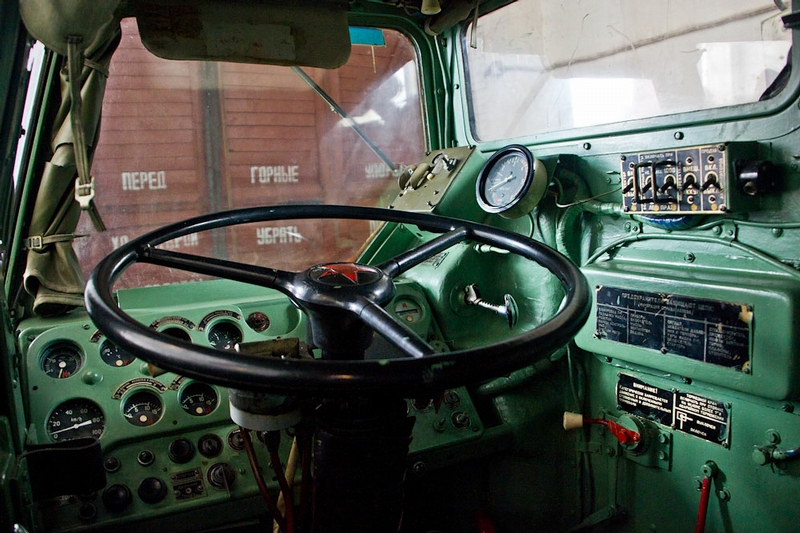
Inside a command and control vehicle.


Another command and control vehicle and a launcher.
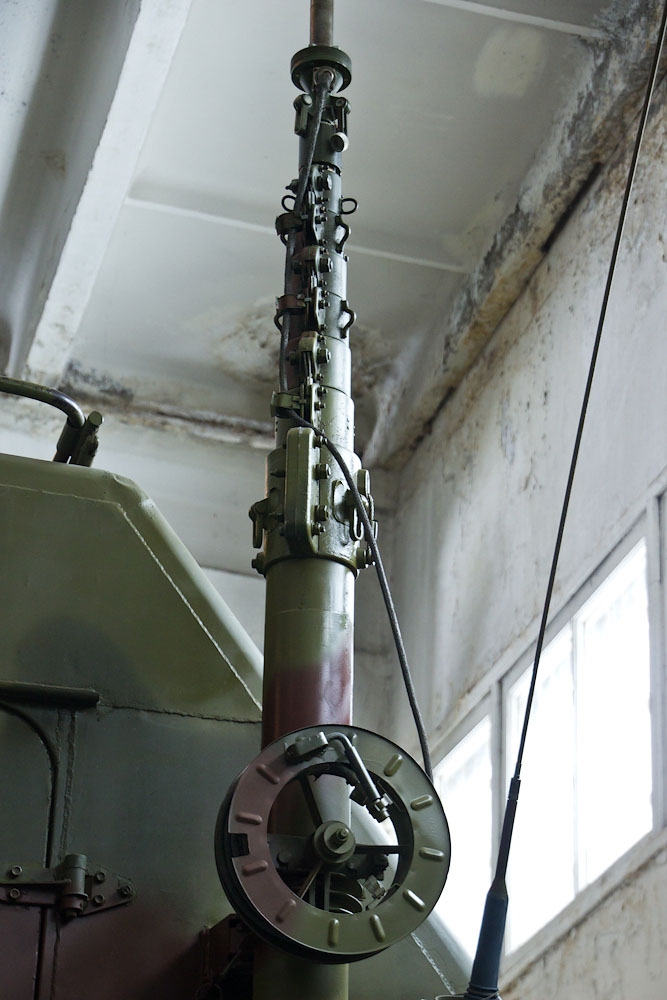
A telescopic antenna in the rear of the vehicle.

A general view of the hangar.
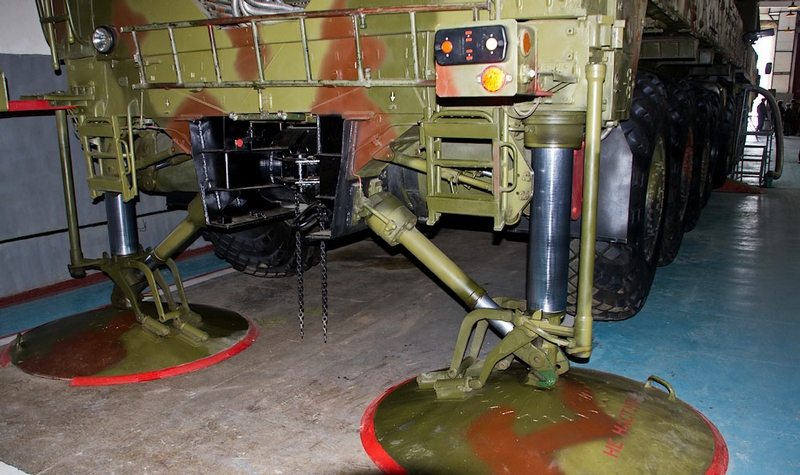
The rear of the launcher.
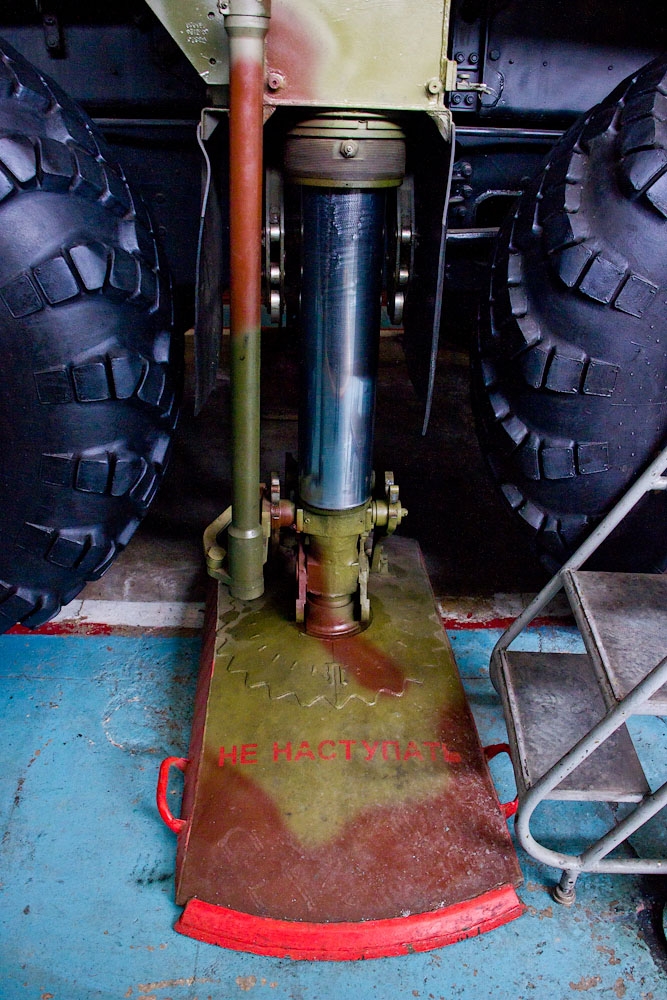
The front. “Do not tread”
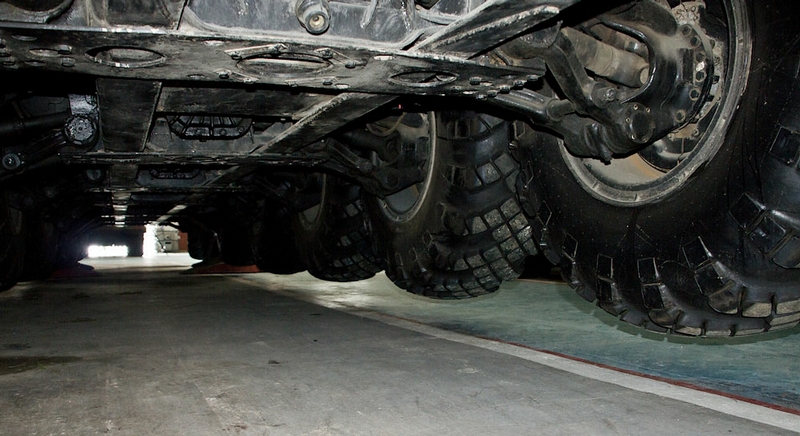
Except for two axles in the middle, they are all driving. Three axles in the front are also steering.
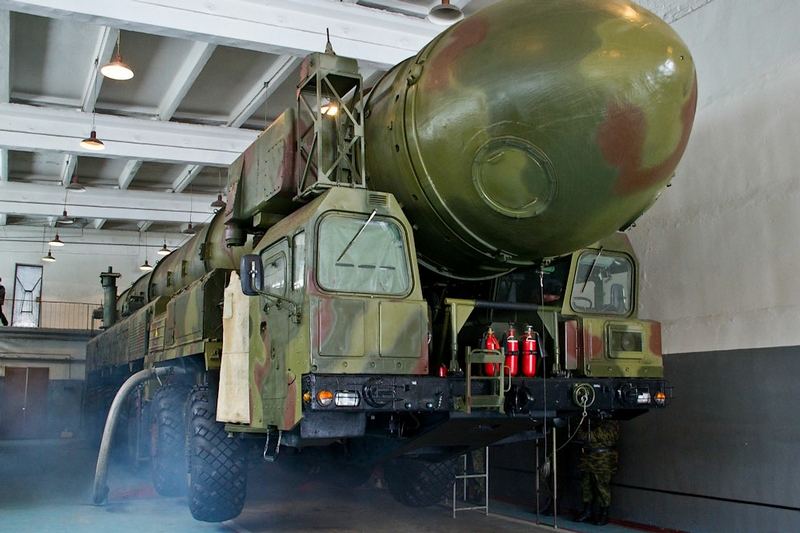
The engine has just been started.
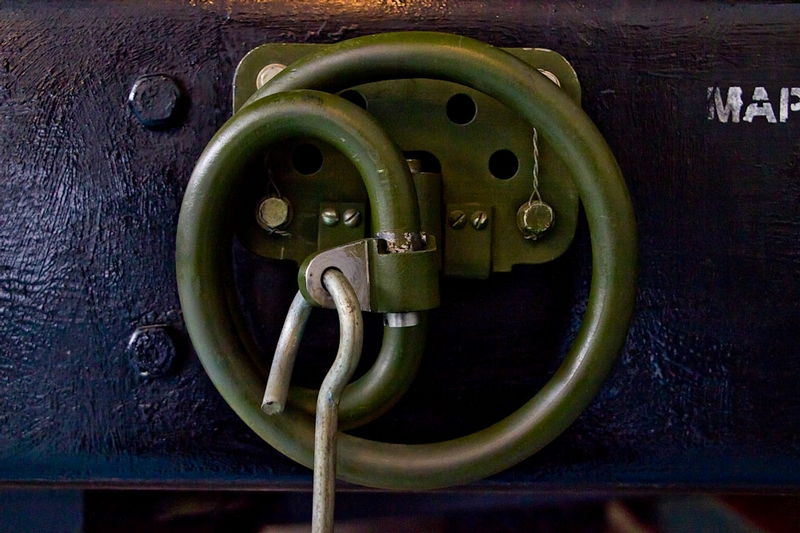
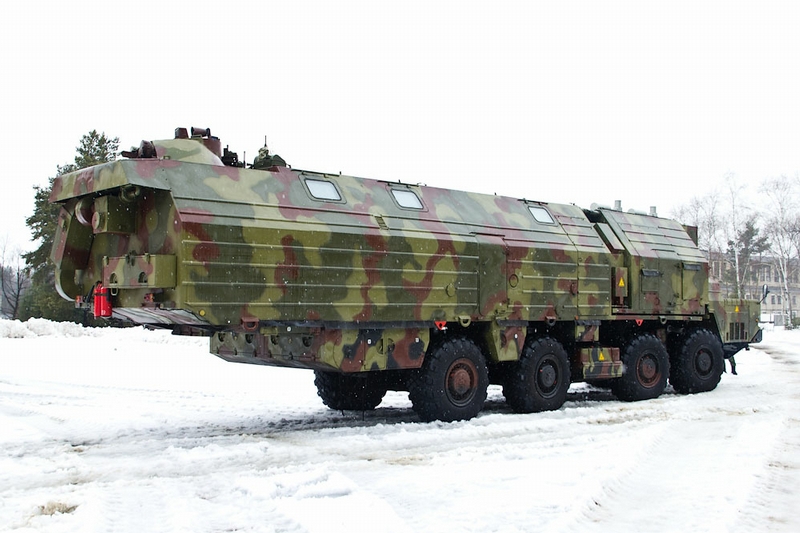
The mobile intercontinental ballistic missile has been rolled outdoors.
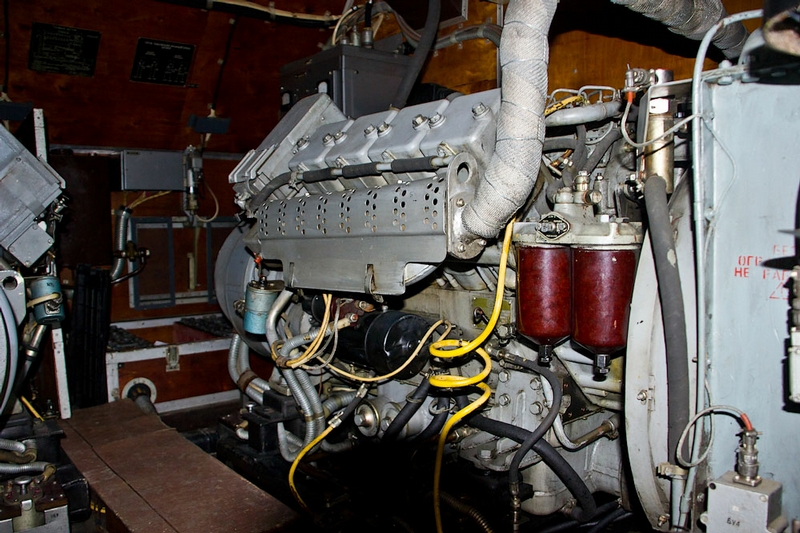
There is a diesel power station in the front of the vehicle.
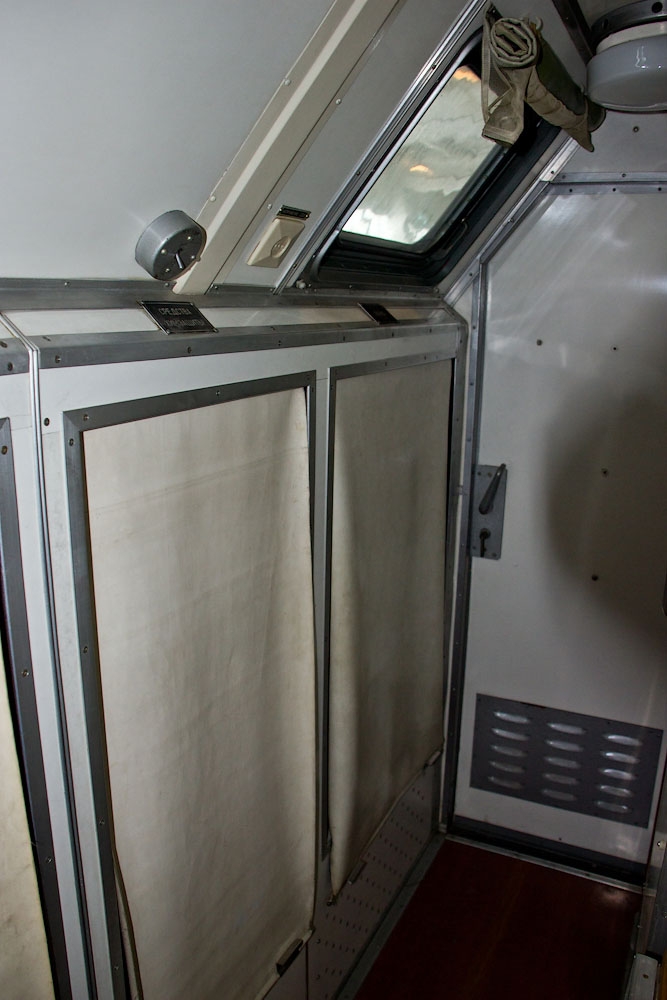
The rear is for the combat team.
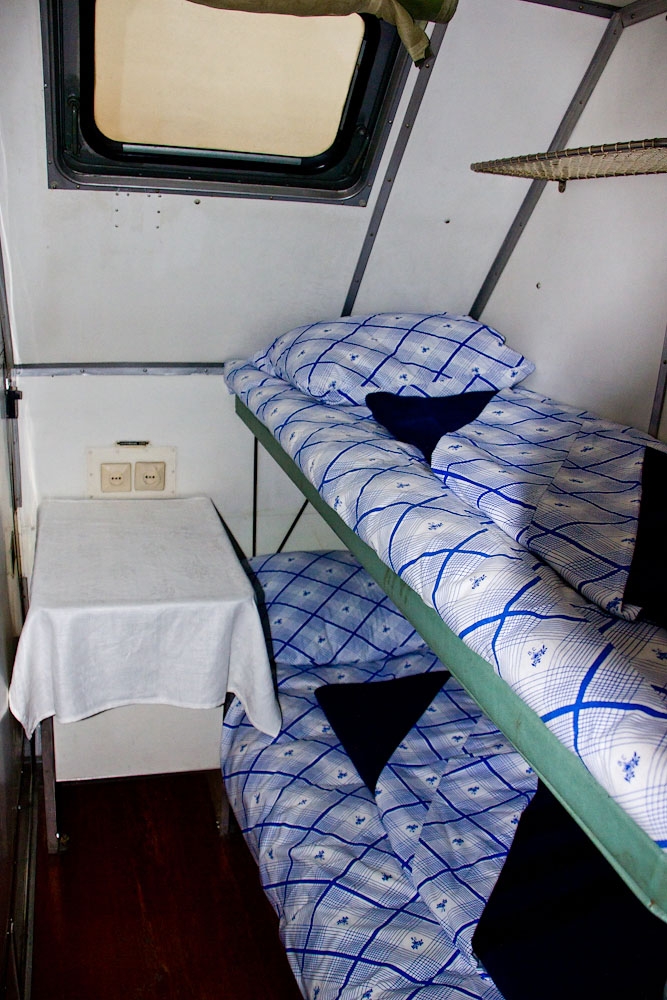
It looks like compartments in here and there’s very little space. There are 2 compartments. One compartment is four-berth and the other one is double.
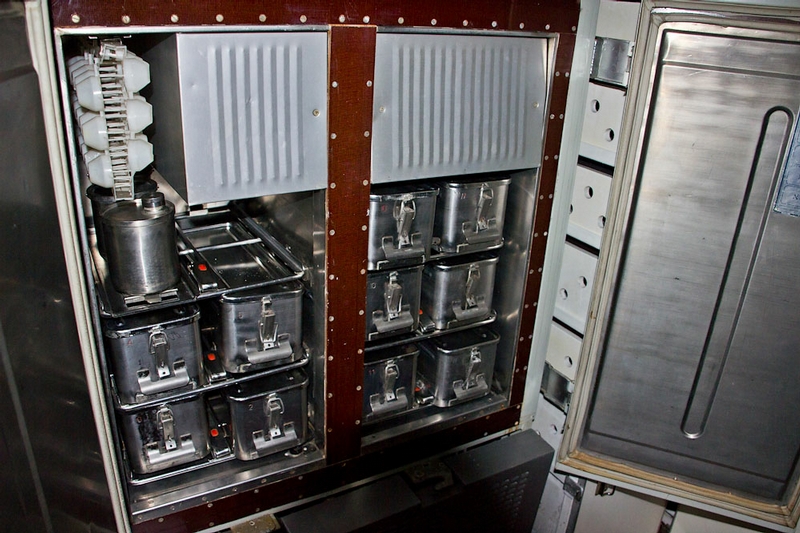
There is also a kitchen over here. In the photo there is its fridge.
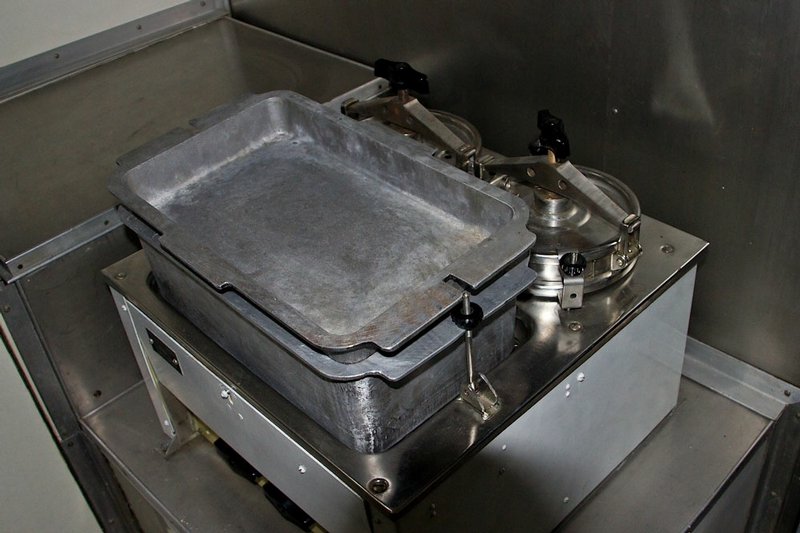
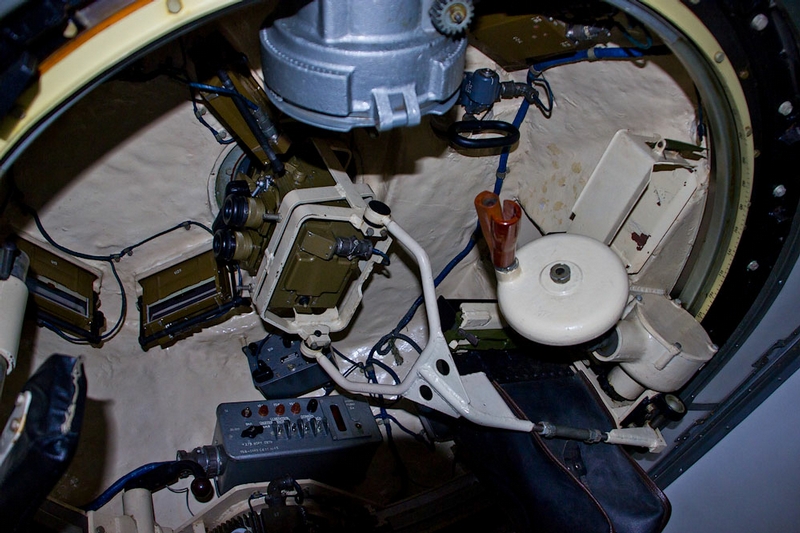
A gun emplacement.
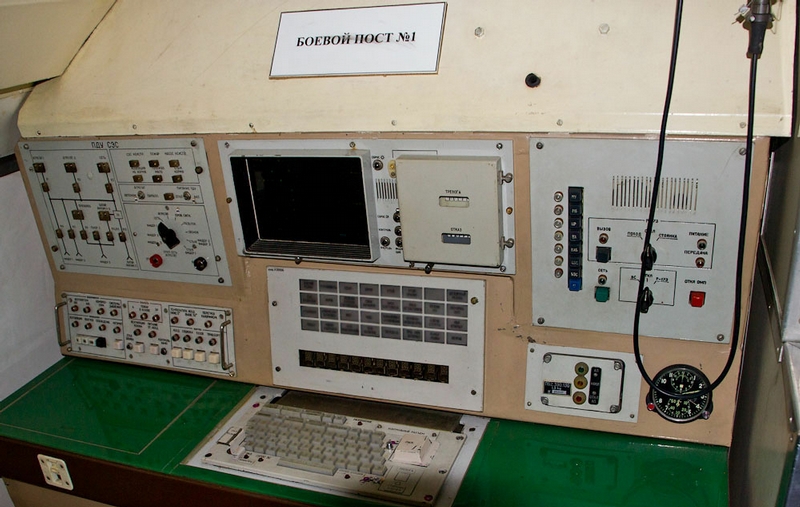
“Battle station”.
This is where missiles are launched from.
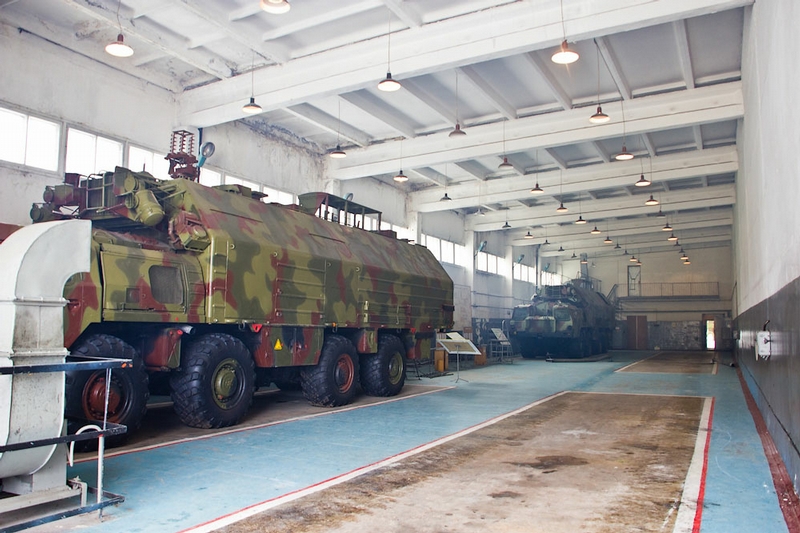
The hangar.

The vehicles performed a lap of honor.
The mobile intercontinental ballistic missile RS-12M Topol.
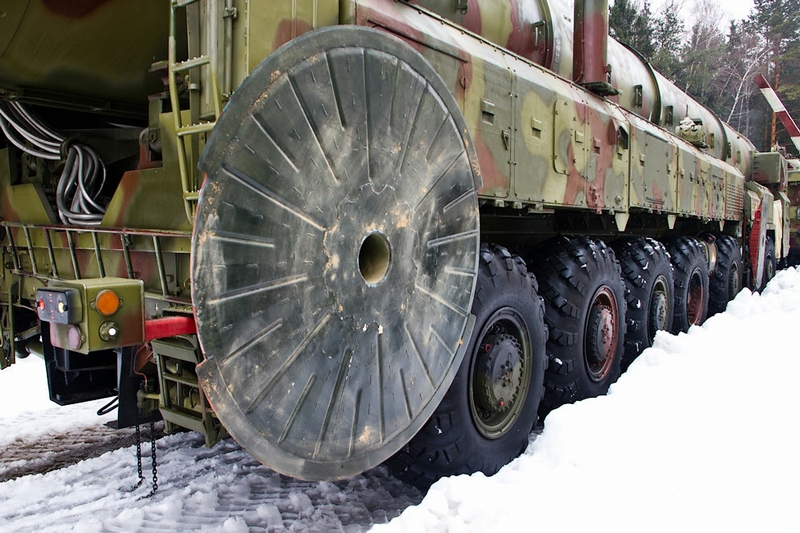
The rear support of the vehicle.
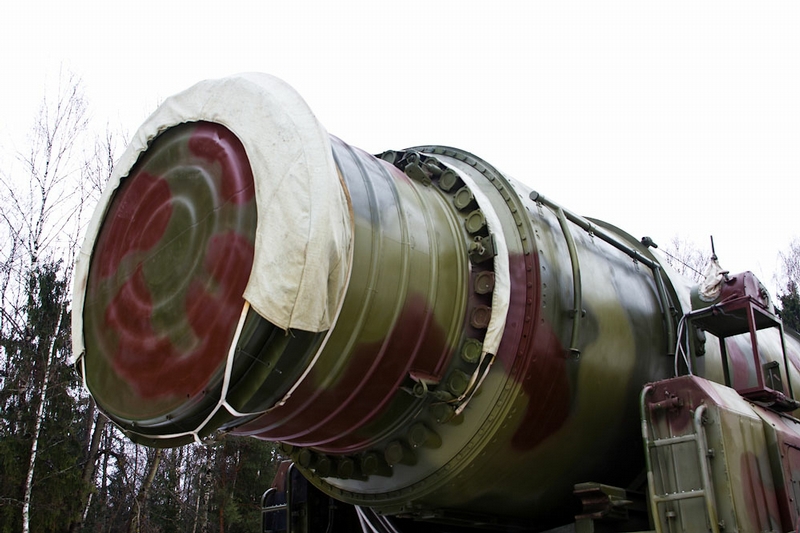
This is where powder to launch the missile is kept.

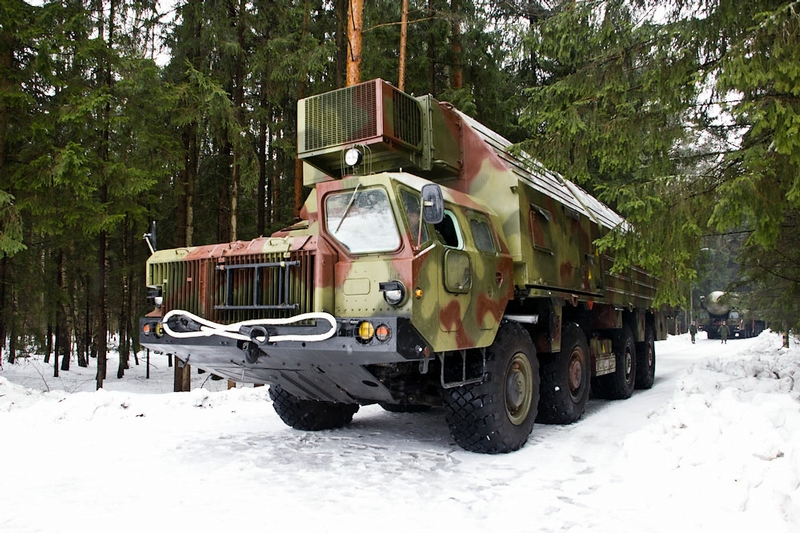


This missile is intended for students but it’s still functioning.

The vehicles return back to the hangar.

Let’s go its museum. It is called the Museum of Strategic Missile Troops of the Russian Federation.
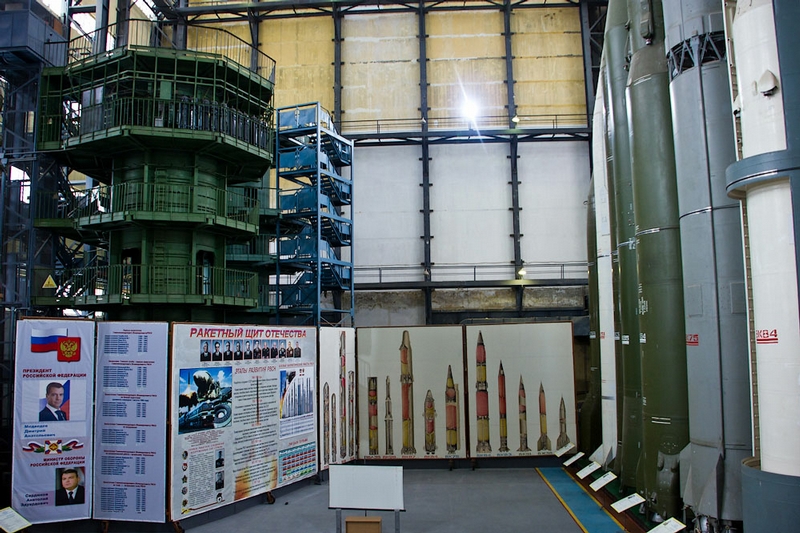
Here you will find rockets and missiles the Armed Forces of the Russian Federation used over the last 60 years.
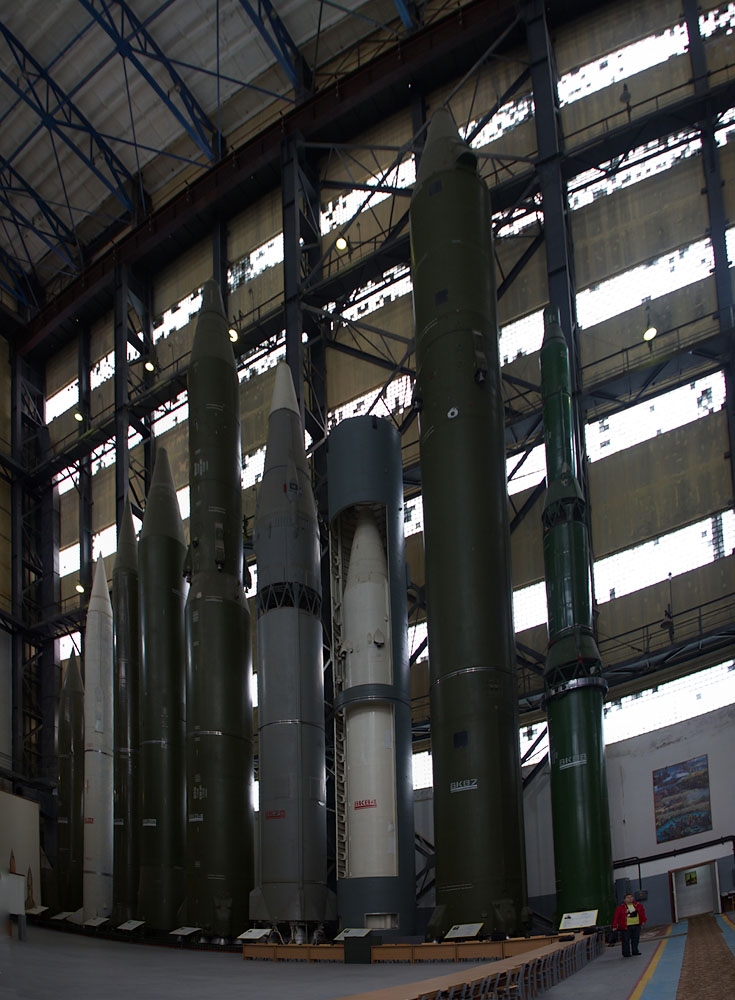
Photography is allowed not everywhere (just the oldest ones can be photographed).
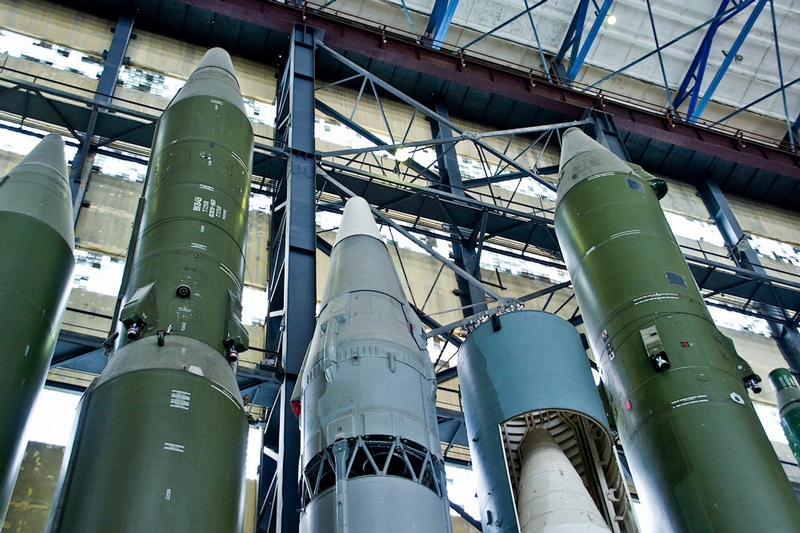
Here you will find the legendary R-2, R-5M, R-12, R-14, R-16, R-9A, UR-100, R-36 and RT-2.

The R-2 rocket was developed based on R-1 design. This was an improved version of the German V-2 rocket manufactured by the Soviet Union. The R-1 was quickly followed by an evolutionary improvement, the R-2 (SS-2), which had a longer range and at least four major differences in design. The weight was increased by 50%, but the range was more than doubled, to 600 km.
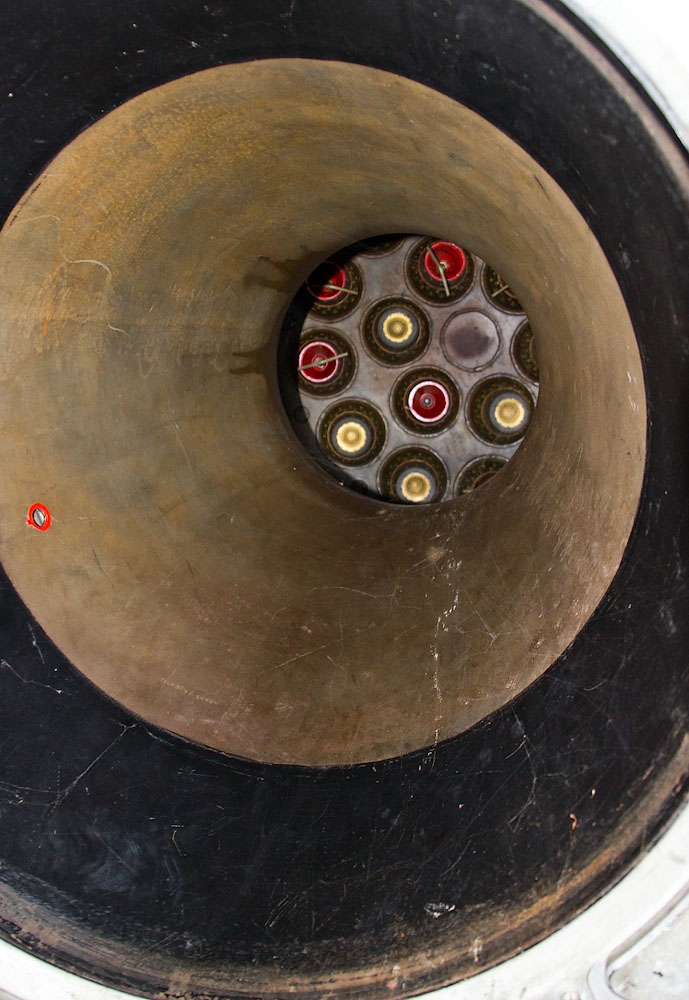
Its engine became 1.4 times as light.
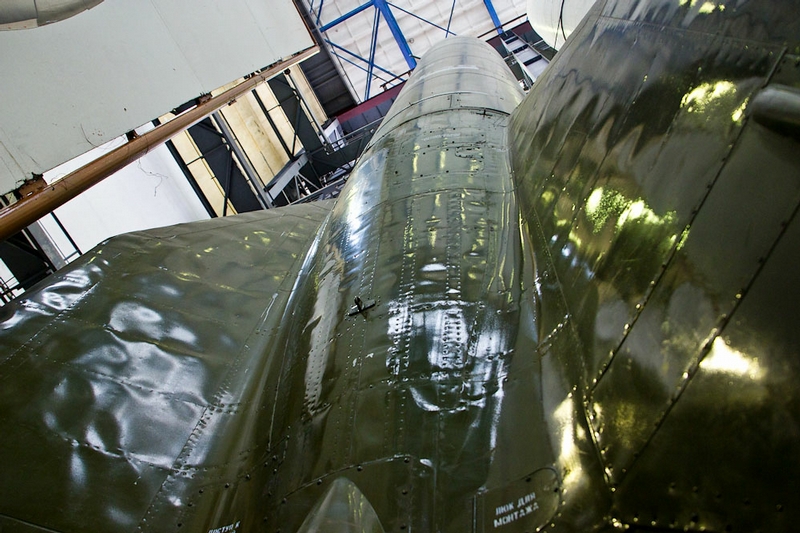
The first test flight of the R-2 took place in September 1949, and it was accepted for service in November 1951, actually entering service in large numbers around 1953. A grand total of 1,545 R-1 and R-2 missiles were produced.

The R-5 Pobeda (“Victory”) was a theatre ballistic missile developed by the Soviet Union during the Cold War. The R-5M version was assigned the NATO reporting name SS-3 Shyster.
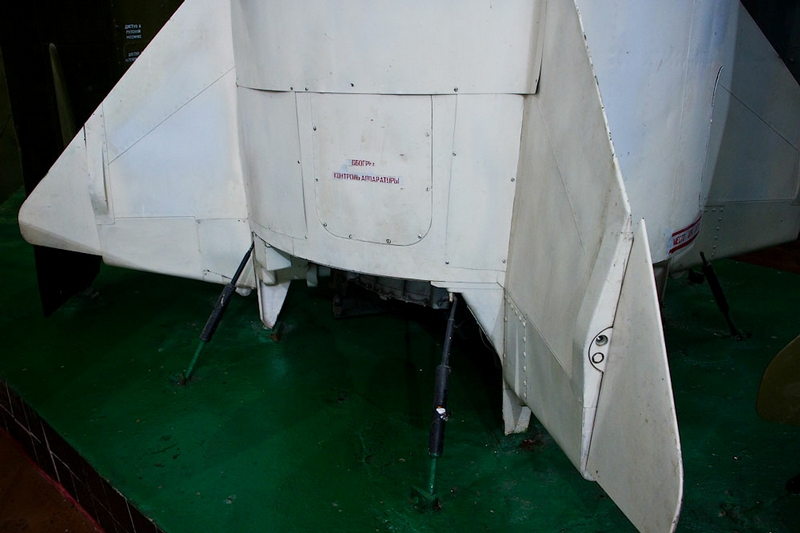
The R-5 was originally designed as a single-stage missile with a detachable warhead reentry vehicle. The R-5M was a nuclear armed missile – the first nuclear missile to be deployed by the Soviet Union – with greater payload and weight but better reliability than its predecessor. The R-5M entered service in 1956 (retired in 1967).

The R-12 Dvina was a theatre ballistic missile developed and deployed by the Soviet Union during the Cold War. The R-12 rocket provided a capability to attack targets at medium ranges with a megaton-class nuclear warhead.

Deployments of the R-12 missile in Cuba caused the Cuban Missile Crisis of 1962.

The R-14 Chusovaya was a theatre ballistic missile developed by the Soviet Union during the Cold War. It was given the NATO reporting name SS-5 Skean. It was designed by Mikhail Kuzmich Yangel. Chusovaya is the name of a river in Russia. Line production was undertaken by facility No 1001 in Krasnoyarsk.


The R-16 was the first successful intercontinental ballistic missile deployed by the Soviet Union. In the West it was known by the NATO reporting name SS-7 Saddler. The missile was 30.4 m long, 3.0 m in diameter and had a launch weight of 141 tons. The maximum range was 11,000 km with a 5-6 Mt thermonuclear warhead and 13,000 km with a 3 MT warhead. The missile had a circular error probable (CEP) of 2.7 km.

During development, a massive failure occurred on October 24th, 1960, when a prototype rocket exploded on the pad killing over 100 personnel. After decades of government coverup, this incident, referred to as the Nedelin disaster, was finally revealed.

After the delays associated with the deaths of most people working on the project, the first flight of the missile took place in February, 1961. Initial operational capability was achieved on November 1st, 1961. The missile continued to serve until 1976, with maximum deployment numbers reached in 1965 with 202 missiles deployed. The Soviets had fewer than 50 of these missiles deployed in 1962 during the Cuban Missile Crisis.

The R-16 was a true first-generation intercontinental missile and a vast improvement over the largely experimental ‘zeroth’ generation R-7 Semyorka. Unsymmetrical dimethylhydrazine was bipropellant used in R-16. It was initially deployed at soft sites which were not shielded from nuclear attack. On normal duty the missiles were stored in hangars, and it took one to three hours to roll them out, fuel them, and reach launch readiness. The missiles could remain fueled for only a few days due to the corrosive nature of the nitric acid fuel oxidant. After this, the fuel would have to be removed and the missile sent back to the factory for rebuilding. Even when fueled and in an alert posture, the Soviet missiles still needed to wait up to twenty minutes to spin up the gyroscopes in their guidance systems before launch was possible. Despite these shortcomings, the R-16 was unquestionably the first truly credible rocket-based strategic nuclear deterrent developed by the Soviet Union.

The Soviets were aware of the missile’s vulnerability, and from 1963 onward some R-16U missiles were based in silos, with around 69 silo launchers put into service. Each launch complex consisted of three silos clustered together for economic reasons to allow them to use a common refueling system, making them vulnerable to a single U.S. missile.


The R-9 was a two stage ICBM of the Soviet Union. Designed in 1959 and first tested in 1961, the R-9 was a great improvement over previous Soviet missile designs. The missile, capable of delivering a 1,600 kg payload about 6,000 nautical miles (11,000 km) to an accuracy of 1 nautical mile (2 km), was not only very accurate, but was also far more tactically useful to the Soviet Union.



The UR-100 was an intercontinental ballistic missile developed and deployed by the Soviet Union from 1966 to 1996.

The UR-100 was a two-stage liquid-propellant lightweight ICBM. Initial versions carried a single warhead of 0.5 to 1.1 MT yield, while later versions could carry three or six MIRV warheads. The missile was silo-launched. 15P784 silo design was greatly simplified in comparison to earlier missiles. Facilities consisted of hardened, un-manned silos controlled by a single central command post. This was the first soviet ICBM equipped with missile defense countermeasure “Palma” by NII-108 of V.Gerasimenko.



The R-36 is a family of intercontinental ballistic missiles and space launch vehicles designed by the Soviet Union during the Cold War.

The R-36 (SS-9) is a two-stage rocket powered by a liquid bipropellant, with UDMH as fuel and nitrogen tetroxide as an oxidizer.



The rotation gear of its control rocket motor.



The RT-2 was an intercontinental ballistic missile deployed by the Soviet Union, which was in service from December, 1968 until 1976.

The RT-2 was the first solid-propellant ICBM in Soviet service, and was a development of the earlier RT-1 series. It was a three-stage inertially-guided missile that is comparable to the American Minuteman III. It was armed with a single 600 kiloton warhead and was silo-launched, although a rail-based version was contemplated by Soviet planners. It was deployed in the Yoshkar-Ola missile field.
The two upper stages of the RT-2 were used to develop the RT-15 mobile IRBM system.




Its warhead.



A command post.


Here students study peculiarities of service at underground command posts.

Location: Balabanovo
Today we are going to visit the Academy of the Strategic Missile Troops of the Russian Federation located in Balabanovo-1, the Kaluga Region.
Advertisement:
<center>
</center>

Reporters and bloggers were shown a mobile intercontinental ballistic missile RS-12M Topol.

In the hangar.


Inside a command and control vehicle.


Another command and control vehicle and a launcher.

A telescopic antenna in the rear of the vehicle.

A general view of the hangar.

The rear of the launcher.

The front. “Do not tread”

Except for two axles in the middle, they are all driving. Three axles in the front are also steering.

The engine has just been started.


The mobile intercontinental ballistic missile has been rolled outdoors.

There is a diesel power station in the front of the vehicle.

The rear is for the combat team.

It looks like compartments in here and there’s very little space. There are 2 compartments. One compartment is four-berth and the other one is double.

There is also a kitchen over here. In the photo there is its fridge.


A gun emplacement.

“Battle station”.
This is where missiles are launched from.

The hangar.

The vehicles performed a lap of honor.
The mobile intercontinental ballistic missile RS-12M Topol.

The rear support of the vehicle.

This is where powder to launch the missile is kept.




This missile is intended for students but it’s still functioning.

The vehicles return back to the hangar.

Let’s go its museum. It is called the Museum of Strategic Missile Troops of the Russian Federation.

Here you will find rockets and missiles the Armed Forces of the Russian Federation used over the last 60 years.

Photography is allowed not everywhere (just the oldest ones can be photographed).

Here you will find the legendary R-2, R-5M, R-12, R-14, R-16, R-9A, UR-100, R-36 and RT-2.

The R-2 rocket was developed based on R-1 design. This was an improved version of the German V-2 rocket manufactured by the Soviet Union. The R-1 was quickly followed by an evolutionary improvement, the R-2 (SS-2), which had a longer range and at least four major differences in design. The weight was increased by 50%, but the range was more than doubled, to 600 km.

Its engine became 1.4 times as light.

The first test flight of the R-2 took place in September 1949, and it was accepted for service in November 1951, actually entering service in large numbers around 1953. A grand total of 1,545 R-1 and R-2 missiles were produced.

The R-5 Pobeda (“Victory”) was a theatre ballistic missile developed by the Soviet Union during the Cold War. The R-5M version was assigned the NATO reporting name SS-3 Shyster.

The R-5 was originally designed as a single-stage missile with a detachable warhead reentry vehicle. The R-5M was a nuclear armed missile – the first nuclear missile to be deployed by the Soviet Union – with greater payload and weight but better reliability than its predecessor. The R-5M entered service in 1956 (retired in 1967).

The R-12 Dvina was a theatre ballistic missile developed and deployed by the Soviet Union during the Cold War. The R-12 rocket provided a capability to attack targets at medium ranges with a megaton-class nuclear warhead.

Deployments of the R-12 missile in Cuba caused the Cuban Missile Crisis of 1962.

The R-14 Chusovaya was a theatre ballistic missile developed by the Soviet Union during the Cold War. It was given the NATO reporting name SS-5 Skean. It was designed by Mikhail Kuzmich Yangel. Chusovaya is the name of a river in Russia. Line production was undertaken by facility No 1001 in Krasnoyarsk.


The R-16 was the first successful intercontinental ballistic missile deployed by the Soviet Union. In the West it was known by the NATO reporting name SS-7 Saddler. The missile was 30.4 m long, 3.0 m in diameter and had a launch weight of 141 tons. The maximum range was 11,000 km with a 5-6 Mt thermonuclear warhead and 13,000 km with a 3 MT warhead. The missile had a circular error probable (CEP) of 2.7 km.

During development, a massive failure occurred on October 24th, 1960, when a prototype rocket exploded on the pad killing over 100 personnel. After decades of government coverup, this incident, referred to as the Nedelin disaster, was finally revealed.

After the delays associated with the deaths of most people working on the project, the first flight of the missile took place in February, 1961. Initial operational capability was achieved on November 1st, 1961. The missile continued to serve until 1976, with maximum deployment numbers reached in 1965 with 202 missiles deployed. The Soviets had fewer than 50 of these missiles deployed in 1962 during the Cuban Missile Crisis.

The R-16 was a true first-generation intercontinental missile and a vast improvement over the largely experimental ‘zeroth’ generation R-7 Semyorka. Unsymmetrical dimethylhydrazine was bipropellant used in R-16. It was initially deployed at soft sites which were not shielded from nuclear attack. On normal duty the missiles were stored in hangars, and it took one to three hours to roll them out, fuel them, and reach launch readiness. The missiles could remain fueled for only a few days due to the corrosive nature of the nitric acid fuel oxidant. After this, the fuel would have to be removed and the missile sent back to the factory for rebuilding. Even when fueled and in an alert posture, the Soviet missiles still needed to wait up to twenty minutes to spin up the gyroscopes in their guidance systems before launch was possible. Despite these shortcomings, the R-16 was unquestionably the first truly credible rocket-based strategic nuclear deterrent developed by the Soviet Union.

The Soviets were aware of the missile’s vulnerability, and from 1963 onward some R-16U missiles were based in silos, with around 69 silo launchers put into service. Each launch complex consisted of three silos clustered together for economic reasons to allow them to use a common refueling system, making them vulnerable to a single U.S. missile.


The R-9 was a two stage ICBM of the Soviet Union. Designed in 1959 and first tested in 1961, the R-9 was a great improvement over previous Soviet missile designs. The missile, capable of delivering a 1,600 kg payload about 6,000 nautical miles (11,000 km) to an accuracy of 1 nautical mile (2 km), was not only very accurate, but was also far more tactically useful to the Soviet Union.



The UR-100 was an intercontinental ballistic missile developed and deployed by the Soviet Union from 1966 to 1996.

The UR-100 was a two-stage liquid-propellant lightweight ICBM. Initial versions carried a single warhead of 0.5 to 1.1 MT yield, while later versions could carry three or six MIRV warheads. The missile was silo-launched. 15P784 silo design was greatly simplified in comparison to earlier missiles. Facilities consisted of hardened, un-manned silos controlled by a single central command post. This was the first soviet ICBM equipped with missile defense countermeasure “Palma” by NII-108 of V.Gerasimenko.



The R-36 is a family of intercontinental ballistic missiles and space launch vehicles designed by the Soviet Union during the Cold War.

The R-36 (SS-9) is a two-stage rocket powered by a liquid bipropellant, with UDMH as fuel and nitrogen tetroxide as an oxidizer.



The rotation gear of its control rocket motor.



The RT-2 was an intercontinental ballistic missile deployed by the Soviet Union, which was in service from December, 1968 until 1976.

The RT-2 was the first solid-propellant ICBM in Soviet service, and was a development of the earlier RT-1 series. It was a three-stage inertially-guided missile that is comparable to the American Minuteman III. It was armed with a single 600 kiloton warhead and was silo-launched, although a rail-based version was contemplated by Soviet planners. It was deployed in the Yoshkar-Ola missile field.
The two upper stages of the RT-2 were used to develop the RT-15 mobile IRBM system.




Its warhead.



A command post.


Here students study peculiarities of service at underground command posts.

Location: Balabanovo
